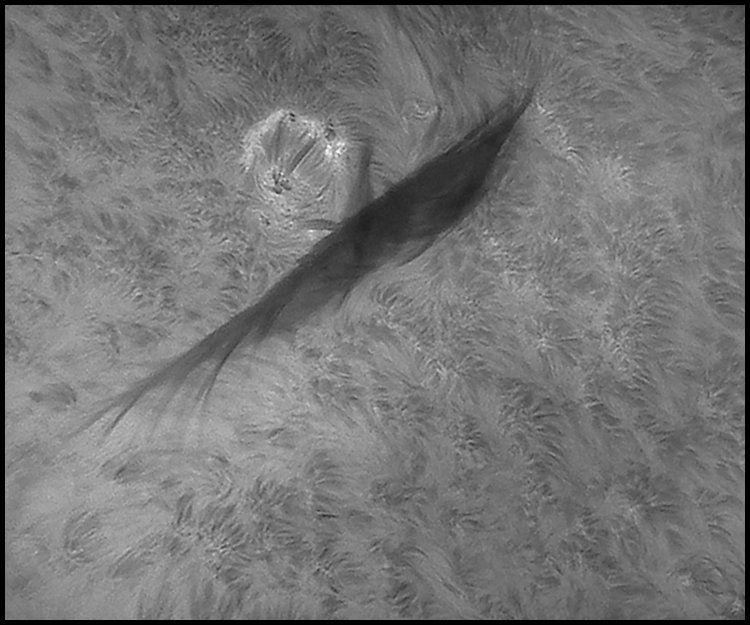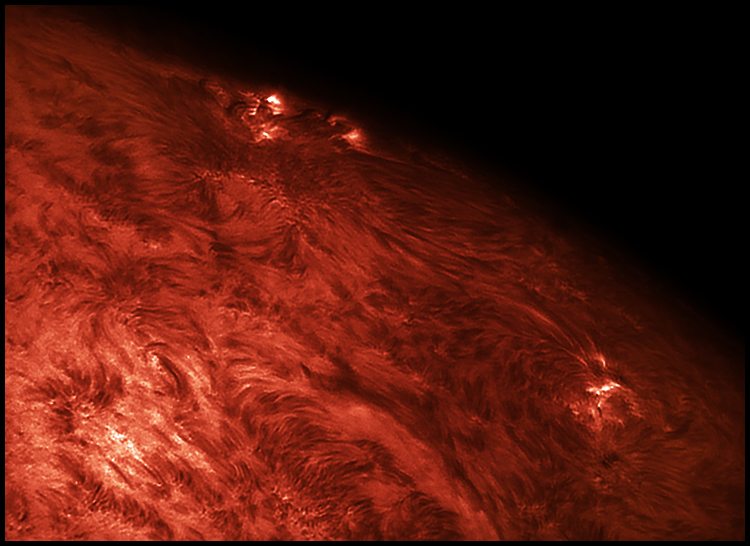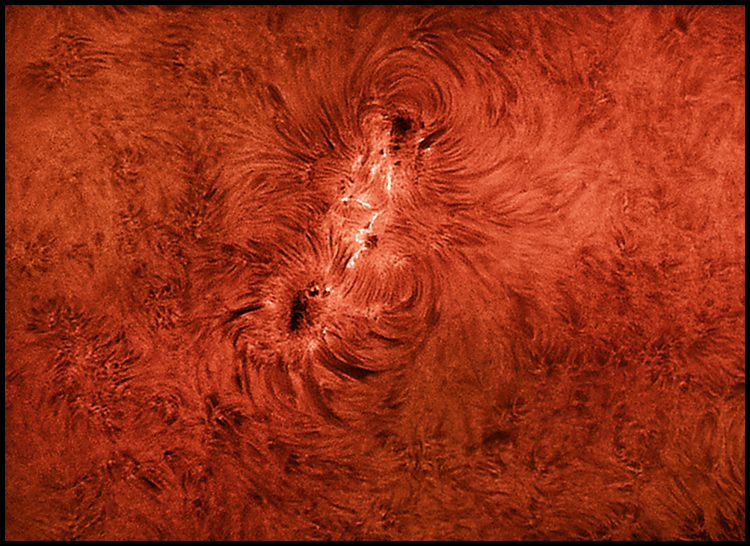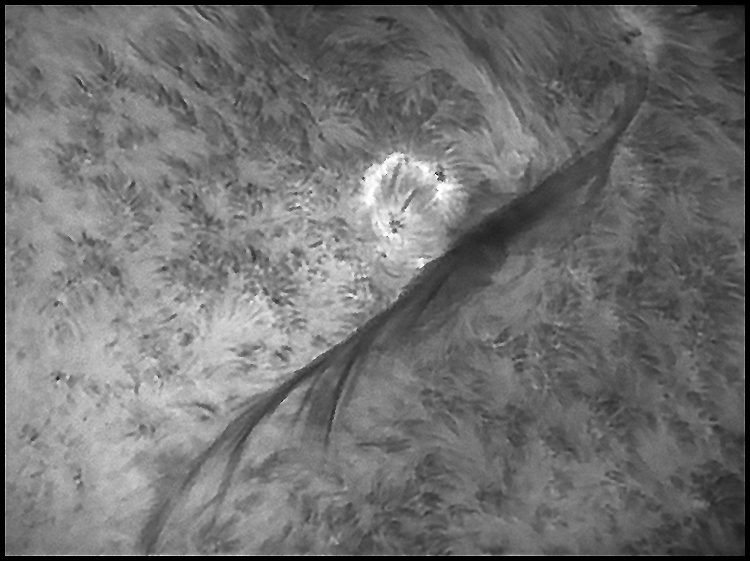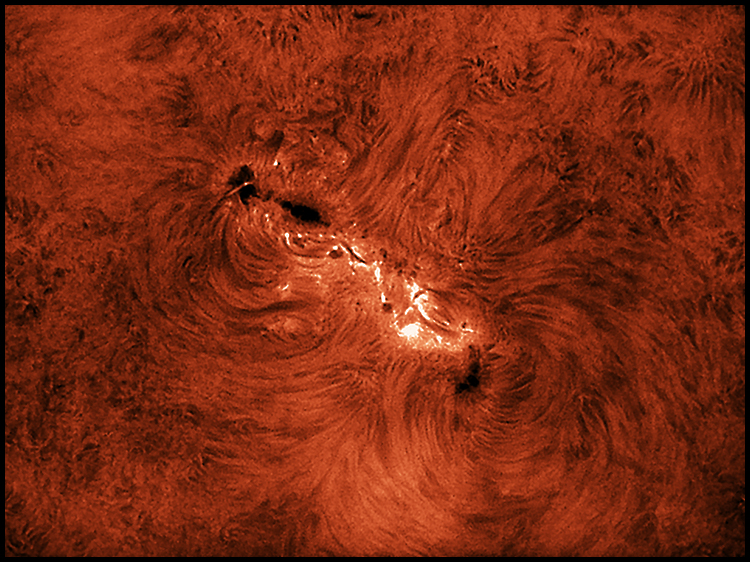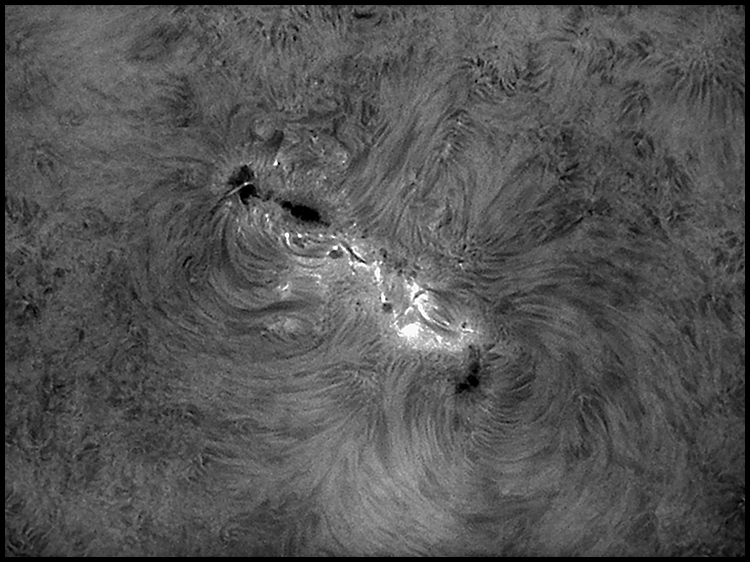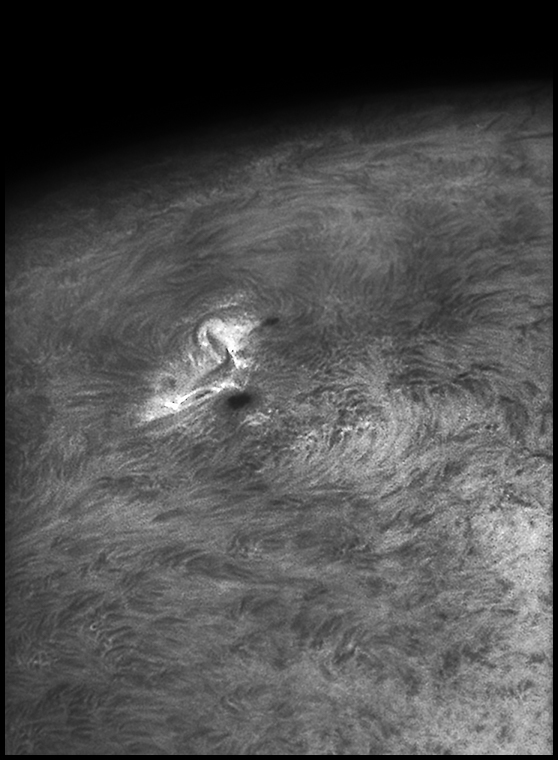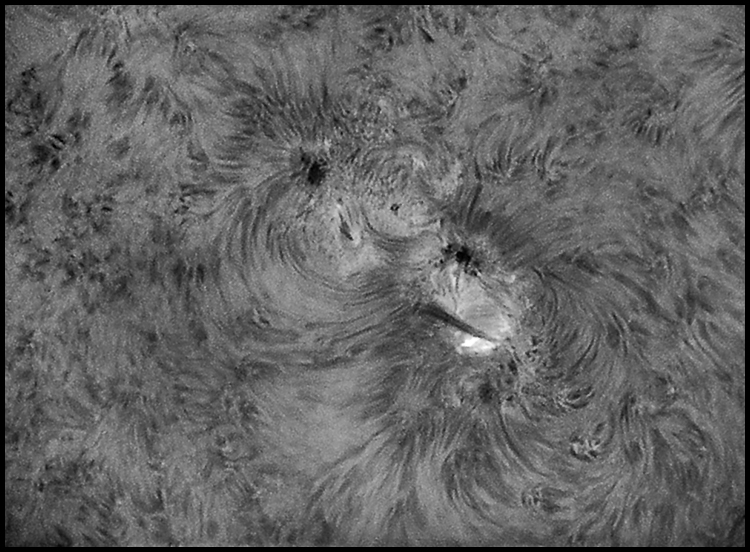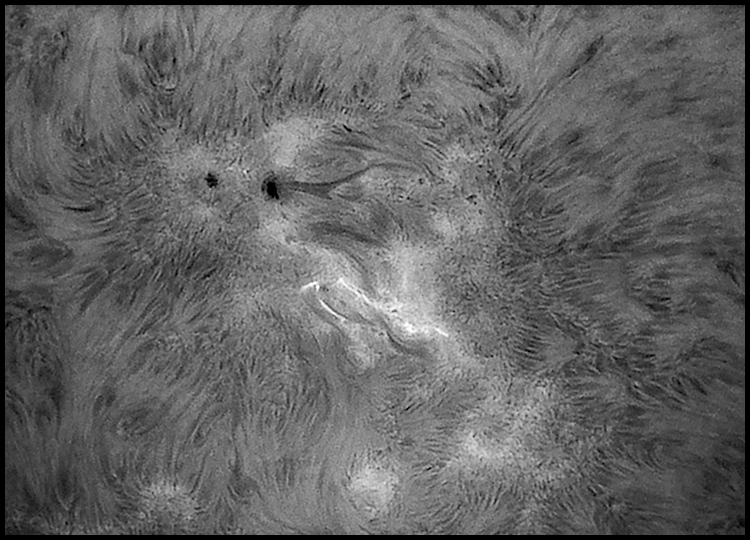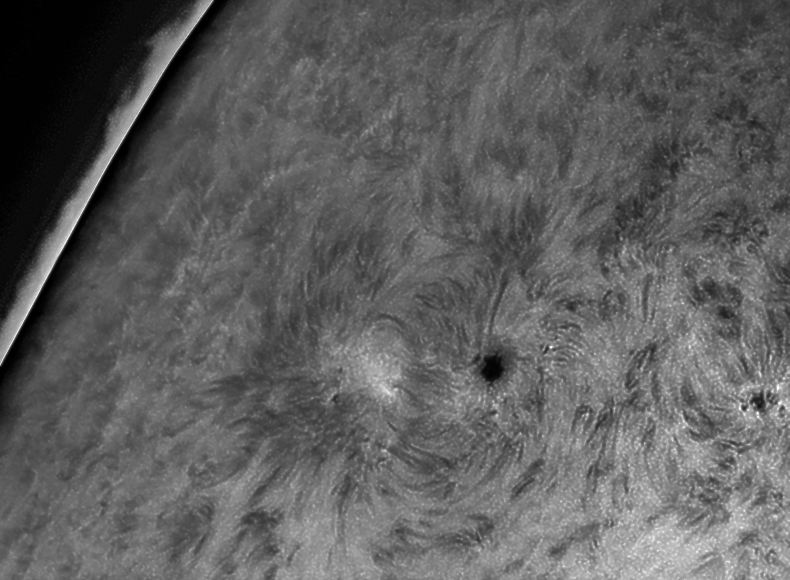|
All these are stacks of a couple of hundred frames selected for sharpness from clips of a few thousand. For example, the one up top with the lovely tones is 200 frames out of about six thousand. Shows, doesn't it? And all are done at the 0.33"/pixel scale produced by the Kunming 152 / Lunt 60Tha Frankenscope feeding the PGR Chameleon with the barlow mounted inside the snout in its machined nook. 0 db, 0.50 gamma, 10ms per frame. After stacking in AVIStack 2, I've taken to using Registax 6.0 with some wavelet profiles tailored to this instrument and more adjustments to gamma. Not too shabby, eh? When I took the data for the first image above, that complex filament was on the verge of erupting. SDO produced a killer video. From my perspective, the lower left end became even more diaphranous, the densest portions moved rapidly to the upper right, and then the filament fragmented into streaky clumps. Here it is just beginning to stretch out:
It took maybe another 45 minutes to break up and disappear. Good show. But note the less-graceful tones and loss of detail. This is 100 frames from a clip of only 400. And that shows, too, alas.
9/01/2012. More, more, more...
The same tech-specs for these. The picturesque "bar magnet with iron filings" AR is active region 1560 which was sparkling with
9/03/2012: Cai-Uso Wohler routinely gets the detail and tone I achieve only by accident. http://www.cuwohler.de/hasun/has12-3/hasun.html See? After inspecting his technical information, I'm wondering if some of the low-contrast I'm seeing in my efforts is due to IR-leakage. So I'll add a Baader UV-IR cut filter to the H-a imaging chain and see if IR visible to the Chameleon has been washing out my narrowband images. I just don't think anyone who produces such consistently excellent results has left superfluous glass in the kit. Now a little housekeeping: I've updated the menu bar at the top of these Sungazing pages to replace the infrequently updated Sacramento Peak page in favor of SolarMonitor.org. The "search" function covers the entire slowblog but is updated only about once every week or two. A brief hole in the clouds let me see what AR1560 is up to today, then clanged shut and rained on my outfit (I got it covered and shut down before much more than a heavy dew had landed).
Best 100 frames out of 350 (top) and out of 1,200 (10 minutes later)
9/05/2012. A brief clearing, a newly developed AR 1564:
Best 60 out of 400 frames. To the usual processing steps, I added a dynamic mask to act as a partial flat; it evens out field illumination but does nothing for dust.
9/07/2012. A four frame mosaic from 1564 to 1562 worked out very well. It's on Spaceweather.com in the contributors' gallery, but I am just too beat to work it up for this page now. I think there's room to improve the somewhat harsh noise that comes from stretching a short stack of images (only 100 of 400 rather than 200+ from thousands). The dynamic masking technique I worked out long ago to retrieve shadow detail from noisy DSLR images flattened the illumination nicely and made compositing reasonably easy (duplicate the data in a second layer; invert; blur with radius ~60; composite using the "soft light" blend). I tried some 12-bit image captures but missed the in-camera gamma setting available only when working with 8-bit data. Presumably, I could do better with the deeper bit depth in postproc, but doing so is more of a change to the workflow than I want to deal with just now.
9/08/2012. With the PGR camera under a low-wattage tungstun lamp (lots of IR relative to visible light), I tried measuring the image brightness with and without the Baader IRUV-cut filter by setting the camera on auto-exposure and seeing what shutter speed the software chose. The difference is not subtle. With the filter, 52-58ms, call it 55 on average. Without the filter, 6.8 to 6.2ms, say 6.5. Under these specific circumstances, the camera is seeing about 8.5x as much flux when IR is allowed through. I infer it is very sensitive to IR and that if there is any IR leakage in the H-a chain, it may very well wash out much of the contrast in a narrowband solar image. I saw hints of this when comparing exposures using the Chameleon on the AT10RC behind the A-P Maxbright diagonal vs straight-through. The Maxbright acts as a cut filter at about 700nm and exposures of the "white light" Sun through a "continuum" filter and IR685 filter were strongly influenced. Quality with the 685 filter wasn't hit hard, though, because the all-reflective system is perfectly achromatic and seeing was, if anything, better the farther out into the IR the camera saw. Things are different in the current application. It's not focus or seeing we're trying to control but image contrast at a specific wavelength. If tomorrow's weather is as good as forecast, I expect to see some interesting clips.
9/09/2012. Interesting, but not gob-smacking. Let's say the IR-cut filter provided an incremental rather than a revolutionary improvement today. I don't really see any difference in preferred exposures, so there's not a ton of IR leakage (if any to speak of). Maybe there's better differentiation in the midtones and on the bright side of the histogram. Maybe. That said, I've got lots of cloudy spells to contend with and the day's seeing is horrendous. So let's leave the case for the IR-cut filter open until I can try it under more consistent and generally better conditions (and until I take a more careful cut at processing the with and without samples today).
9/13/2012. Hazy. Exposures were running about 20% longer than under crystal skies even with a little gain (~1-2db), so that's indicative of how dense the high clouds were. Seeing was decent, but contrast sucked. The IR-cut filter may make some difference after all. Many more trials to come. Here's newly numbered AR1571 which has just rotated into view:
Best 80 of 400 frames.
Interestingly, this is a far sharper photo than one derived from a 900-frame clip captured immediately afterward. Piling up frames is nice, but seeing counts.
:: top ::
|
© 2012, David Cortner
